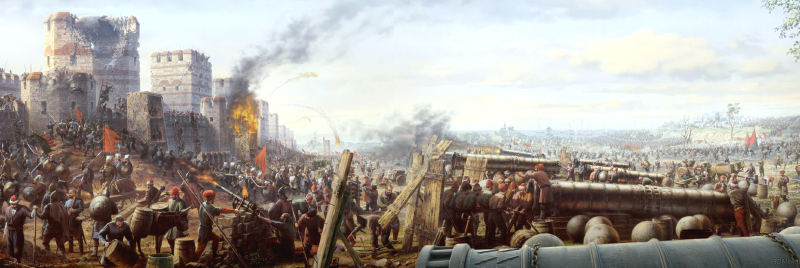Siege warfare. When you speak those words a myriad of images comes to mind: walls, towers, tunnels, projectiles, and waves of men; climbing, fighting, dying. Those are our first impressions and popular movies support those images.
But Siege warfare is complex and varied well beyond the basic elements we commonly think of. Many commanders and armies of the past would do their utmost to avoid it due to the inherent complexities in successfully executing a siege, particularly when it involved advanced and established defenses, difficult terrain, or poor supply. A broken siege often meant disaster for the besieger potentially costing them not just the city but reversing all of the gains of the campaign.
The subject of siege warfare has fascinated me personally for many years both as a student of history and a wargamer. My first real exposure to siege games was the classic SPI title The Art of Siege, which I have borrowed for this posts title. It is imminently appropriate to describe how an army commander would approach a siege. As an art.
In electrical engineering, there is an old adage that digital design rests on a solid foundation of principals and procedures, while analog design is an art form. The roots of this tongue-in-cheek maxim is the level of uncertainty dealing and accounting for all of the unexpected elements in the analog world: a Radio Frequency wave reflecting in an atmosphere is messy, an electron on a conductor, much less so.
And that is what the term, art, really represents when applied to siege warfare: It’s messy, the unexpected can and will happen, the unaccounted for events that will plague you as a military commander will be more frequent than in an open field battle. There is more time for the engagement and therefore more opportunity for those unknowns to arise. By comparison, a battle on an open and flat plain is simpler, men will only be able to fight for so long in an open pitched battle, but behind those walls it could be weeks, or even months, before the capitulation.
It may be high time to readdress siege warfare in terms of a wargame format. The genre has never spawned the volume of works like Napoleonics or World War 2 strategy, and I think following this reasoning, the opportunities to explore the possibilities have been limited. Not by lack of talent of the designers, but more a rarity of opportunity to evolve.
Siege warfare will be the genre I will be focusing on in 2015. As I mentioned in my last post I’ve been doing a lot of thinking in this area and I think it’s time I take it a step further. Let’s see what comes of it.


Sorry, the comment form is closed at this time.